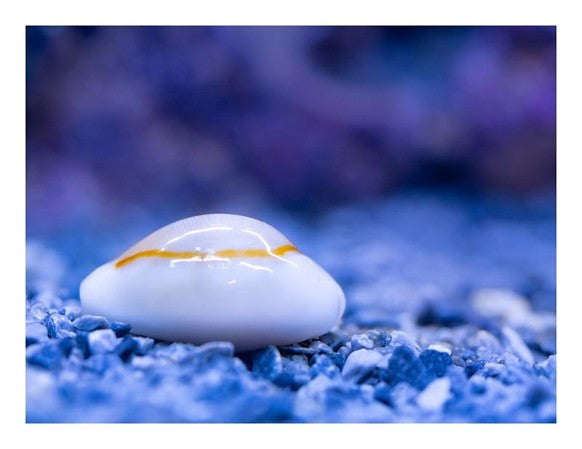The freshwater stingray is without question an incredible creature. More often than not, rays are thought of as saltwater creatures and many are surprised to discover that they also live in freshwater. So what do you need to keep a tank of happy healthy stingrays?
About the Freshwater Ray
 Stingrays are close relatives to sharks and sawfish, in that they have cartilaginous skeletons in place of traditional bone skeletons. In the wild, the river rays you will find here at Pisces live in rivers in subtropical South America. These rays are very circular in shape, with a shorter, tapered tail in comparison to whiptail stingrays. As you probably already know, they get their name from the venomous barb that protrudes out from the tail. As adults, they can grow to have a disk size of up to 18" in diameter with a 12" tail. You can expect a healthy captive ray to live between 5 - 10 years. River rays are highly intelligent and make excellent pets, but have specific tank requirements that must be met in order for them to thrive!
Stingrays are close relatives to sharks and sawfish, in that they have cartilaginous skeletons in place of traditional bone skeletons. In the wild, the river rays you will find here at Pisces live in rivers in subtropical South America. These rays are very circular in shape, with a shorter, tapered tail in comparison to whiptail stingrays. As you probably already know, they get their name from the venomous barb that protrudes out from the tail. As adults, they can grow to have a disk size of up to 18" in diameter with a 12" tail. You can expect a healthy captive ray to live between 5 - 10 years. River rays are highly intelligent and make excellent pets, but have specific tank requirements that must be met in order for them to thrive!
Tank Specs
Right off the bat, it is important to know that a ray tank will take up a lot of space! Bigger is always better for freshwater rays, but your looking at nothing less than a 225 gallon (72" x 30" x 24") glass tank. Juveniles or pups can be kept in an 80 gallon tank but will quickly outgrow their tank. The best approach will be to acquire a tank large enough to house them permanently. The tank size can vary depending on the species, so a good rule of thumb is to do some research on the ray you want to house, and get a tank that is at least twice the disc length in depth and 5 times the disk length in length! Since stringrays are bottom dwellers, you do not need as much emphasis on tank height.
Water Quality!
 Keeping stingrays demands nothing less than pristine water quality, plain and simple. These rays produce a massive amount of ammonia, the most out of any other freshwater fish relative to its size. You are going to want a powerful filtration system to keep your rays healthy, Pisces recommends: Fluval FX4 High Performance Canister Filter. This will provide chemical, mechanical and biological filtration for your ray tank. You will also want to perform a 15% water change once a week to help keep your ammonia levels low. You are going to want to maintain a constant water temperature of 78F in your aquarium. Because rays like to swim up the sides of walls, your heater should be equipped with a protective cover, or be located inside of the sump filter if you have one. Since rays come from high flow areas, you want to simulate their natural environment using a circulation pump. Your water pH should be in the high 6's to low 7's. driftwood can be used to soften the water, which is b beneficial for stingrays. Don't forget to treat your water with water conditioner!
Keeping stingrays demands nothing less than pristine water quality, plain and simple. These rays produce a massive amount of ammonia, the most out of any other freshwater fish relative to its size. You are going to want a powerful filtration system to keep your rays healthy, Pisces recommends: Fluval FX4 High Performance Canister Filter. This will provide chemical, mechanical and biological filtration for your ray tank. You will also want to perform a 15% water change once a week to help keep your ammonia levels low. You are going to want to maintain a constant water temperature of 78F in your aquarium. Because rays like to swim up the sides of walls, your heater should be equipped with a protective cover, or be located inside of the sump filter if you have one. Since rays come from high flow areas, you want to simulate their natural environment using a circulation pump. Your water pH should be in the high 6's to low 7's. driftwood can be used to soften the water, which is b beneficial for stingrays. Don't forget to treat your water with water conditioner!
Decorations
Substrate on the bottom of your ray tank is optional, many hobbiests prefer to keep glass bottoms for easy cleaning and to avoid accidental ingestion. If a glass bottom is not appealing a very fine sand is perfectly acceptable and safe (Pisces recommends CaribSea Super Naturals Premium Aquarium Substrate). Because rays like to dig and burrow under substrate, plants can be more of a nuisance than a benefit. Brazilian driftwood, decorative smooth rocks and floating silk plants make great decoration for a ray tank.
Feeding Your Ray
River rays are carnivorous. In the wild, they prey on small fish and crustaceans along the floor. In captivity, blood worms and raw shrimps make excellent meals for your rays! If you don't have the time to thaw food every day, many captive rays will feast on carnivorous sinking pellet food (Pisces recommends: Hikari Sinking Carnivore Pellets). If you have more than one ray, make sure to carpet your food evenly across the bottom of the tank so all the rays get a portion of food.
Tank Mates & Compatibility
The ideal tank mates for freshwater rays are large, peaceful fish. Since rays spend their time on the tank floor, you want to avoid crustaceans as they will be in danger of being eaten by the rays. On the other hand, you want to avoid small, aggressive fish as they may nip at the rays. Arowanas, flowerhorns, birchirs and silver dollars make ideal tank mates for a sting ray tank. Plecos and sucker catfish are known to cause injury to rays by sucking on their soft bodies. Look for upper and middle level swimmers in your ray tank to keep the bottom free for the rays!





